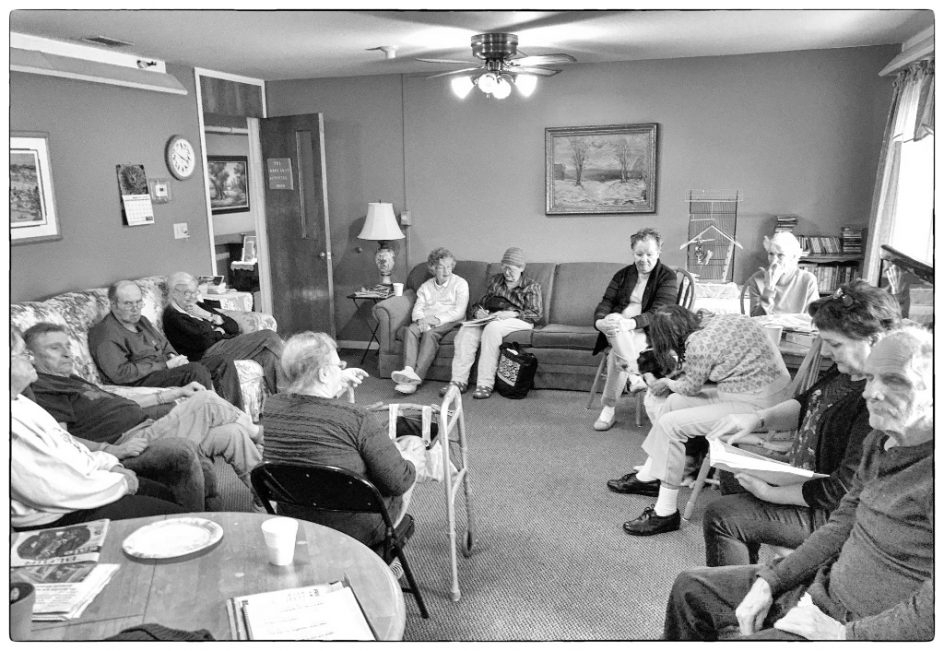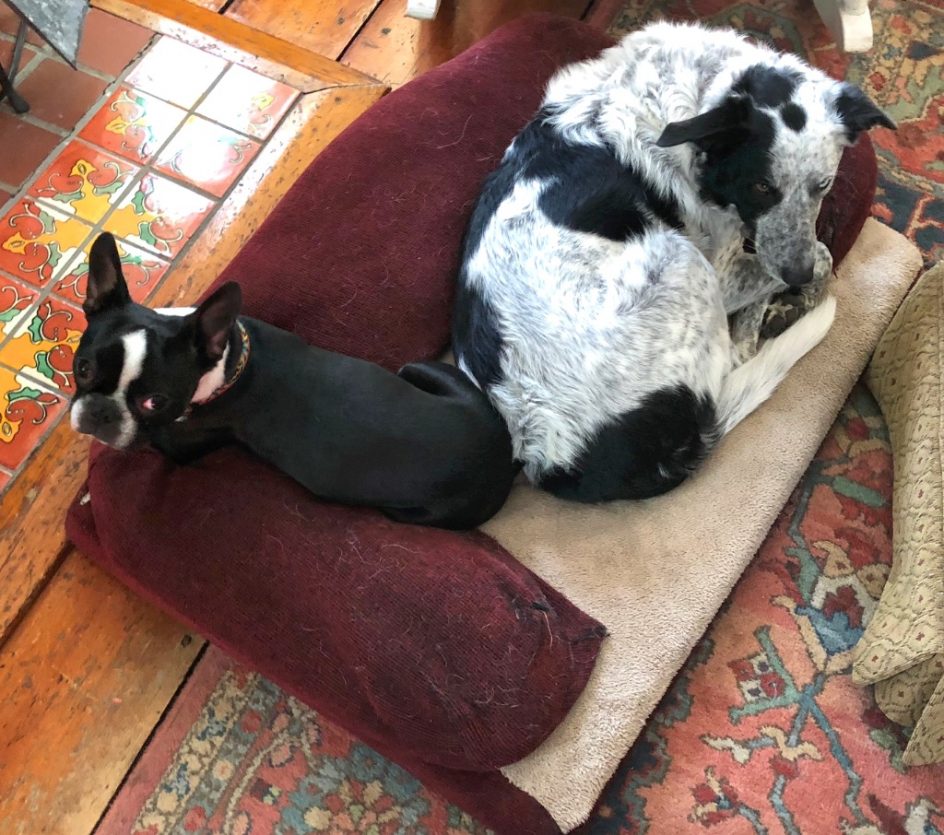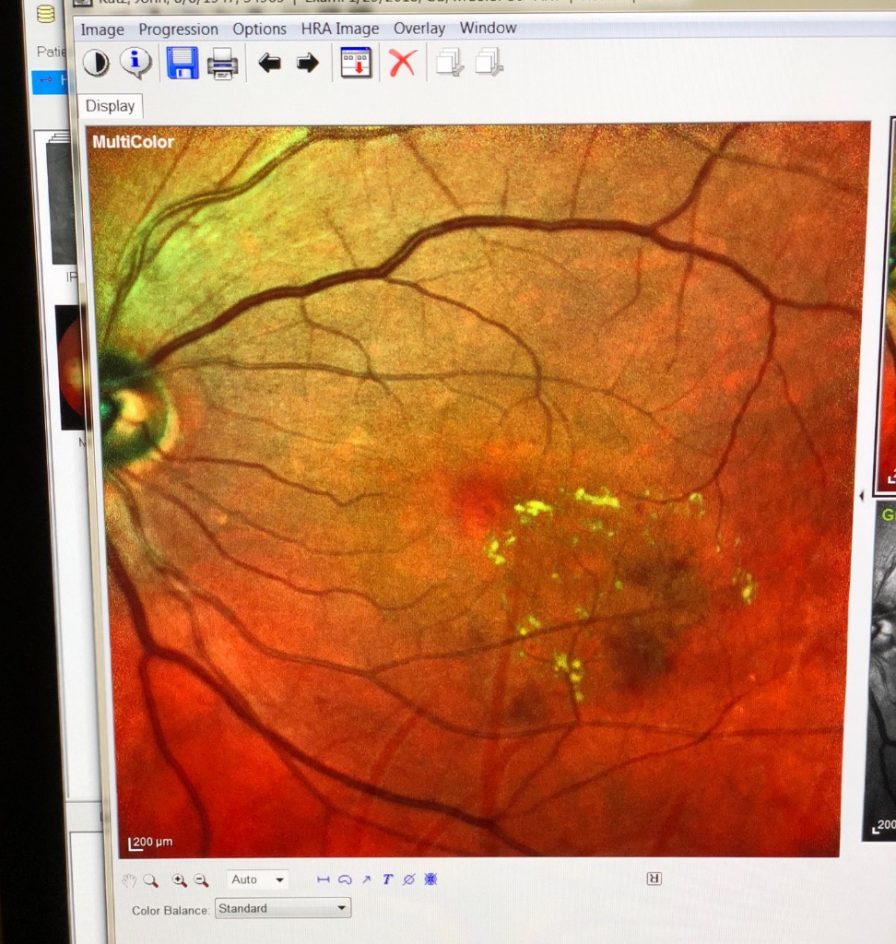
I was more than a little excited when I went over to the Mansion this afternoon with my five books from the Reading2Connect publishing company, which has created a series of book designed for older people with memory challenges.
The books are exceptionally readable, yet are not patronizing.
The publishers say they mean to “retain the integrity of adult literature.” That they do.
We called a meeting of residents at the Mansion, and I introduced them to the activity and reading books. They are used to reading books that are often beneath them, these books are right with them.
Sometimes this group can be attentive, sometimes not. On the subject of reading, they are all eyes and ears.
They were locked into what I was saying, listening carefully, eager to understand. I told them I was not aware of any complete cure for memory loss, that would be stunning news. But perhaps we could learn to use memory in different ways, exercise it a bit, give it a workout like any other exercise.
I spend hour reading these books before I brought them, and I was hopeful. They were different.
I read from the mission statement of the authors, Susan Ostrowski and Peter Dixon. The idea, they said, is to write books that allow older adults to independently lead and engage in reading activities by themselves or with their peers.
“Modifications to the reading material in regards to text, graphic layout, illustrations, language and content can compensate well for a reader’s visual and cognitive deficits. making these adaptations without compromising the intelligence and integrity of a piece of writing and without creating a juvenile quality to the work is critical.”
From my first introduction of some of these books to the residents, I hoped they could become powerful tools for reviving and strengthening memory, and for helping people with memory loss regain their voice and their interest in reading.
The authors were being diplomatic, much of the material given to older residents with memory care are children’s books, somewhat disguised or not.
In face, people with memory loss are often treated like children. This is understandable when it works, they sometimes appear to act like children, but I am eager to see if treating their reading with more dignity and respect might help with memory and cognitive issues.
There is no cure for Alzheimer’s or Dementia, that ought to be clear to everybody from the start, and I would never suggest anything else was possible. It’s not for me to say that or promise that.. I don’t do miracles or alter fate.
I told the residents I wanted to offer a page or two from the book “Read Aloud Word Games” today, a kind of trial.
All eyes were on me, when I read the “Complete The Proverbs Page.” I had rarely felt that degree of focus from so many of the residentsat once. Only one person in the room was dozing.
I began reading from sentences like “Slow and steady wins the ___ and let the people in the room answer (race) or “Practice What You______” (preach).
I was started to see how the room came so quickly to life. Seven or eight of the residents – there were 14 in the room – answered the questions right away, several others paused and answered, three of four were silent. They seemed to be elsewhere, I marked them down for one-on-one reading conversations and interactions.
I asked Joan, who has severe memory loss if she wanted to work with me, and she raised her hand up high, and said “yes, I do.”
What I saw right away was that memory is never really, lost, it is often impossible for these older people to recall. The brain is believed to retain most memory, but over time it can no longer be accessed easily, or at all.
As a test, I asked several if they could tell me what April showers bring to May. None of them answered me, they looked confused, there was silence. When I read out loud “April Showers bring May….” they all said “flowers” in unison.
We went down the rest of the page quickly.
They were proud and excited – and relieved I think – to know the answers so quickly, and to get to shout them out. It seemed to stimulate and focus them. They were seeing that they did have memory, and it could be stimulated, even revived to some degree.
And I will be honest. I have no idea how far we can go with this. Most of the people who work with this memory loss do not believe it is possible to do too much. We’ll see. I loved the energy and pride I saw in that room today. And I believe I saw hope.
I also got the Reading2Connect idea of reviving voice. The residents were not sluggish or disoriented in their voices, as they sometimes are. They were loud and clear and almost jubilant. They were laughing and eager to hear the next proverb. This in itself is healing and healthy. It sounded like pride.
These books are also something the readers can hopefully eventually read themselves, without something leading them. It’s like being a parent to me, if I do my job, I won’t be necessary.
The books, say the authors, seek to satisfy “the universal desires that define us, such as the longing for peer friendships, for laughter, for the experience of learning new things, to and for the chance to be helpful to others.”
These are some of the missing elements of life in assisted care, they by definition leave almost everything they love behind, as they are often left behind.
After i read from the book, I showed the the other books we will be reading from Reading2Connect.
“Masters Of Comedy,” focusing on jokes and names from their own culture – George Burns, Gracie Allen – “Read-Aloud Activities,” “Man’s Best Friend,” books questions, memories and stories about dogs (the residents love to talk about their dogs, they all remember the name of every dog they have ever had, even when they can’t say where they are); more Read Aloud Word Games,” and a book on “Birds.”
The books are, in fact, subtle and indirect. They feel like conversations, not lessons or lectures. They respect the culture of the elderly rather than force the culture of children onto them. They encourage interaction with one another.
This is just the first lesson, it exceeded my expectations.
I am quite excited by what i saw in the eyes and faces of the residents. Their minds were churning, they were awake in every sense of the word.
So just about every hand went up when I asked if they wanted more lessons, in a group or one-on-one.
Madeline is in her 90’s, she has memory issues but is intelligent and aware. She never joins group activities, she is fiercely independent, but her hand shot up right away when I asked who wanted to work with me on reading and memory.
She said she would love to be part of a group lesson.
I scheduled the first lessons for February 7. We’ll schedule more after that. I want some of the residents to read the books to me.
I am grateful to Susan Ostrowski and Peter Dixon, they are onto something that could touch the lives of many people, whose potential and creativity has often been abandoned and left to wither and die. Like them, their memory feels left behind.
Memory is life, the more we can use and more we can keep, the richer and fuller our lives. I saw glimmers of that today. We’ll see where it goes.
I’m going to order more books. If you wish to help, you can donate to Jon Katz, P.O. Box 205, Cambridge, N.Y., 12816, or via Paypal, [email protected]. And thanks.



